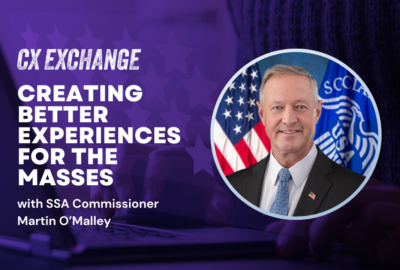Hubbard Radio Washington DC, LLC. All rights reserved. This website is not intended for users located within the European Economic Area.
On Air: Federal News Network
Trending:
DATA Act victory sets stage for expected tough implementation
President Obama is expected to sign the bill into law later this week that will require new levels of effort to make federal data more accessible. Now that the ...
wfedstaff | April 17, 2015 6:45 pm
President Barack Obama will sign the Digital Accountability and Transparency Act (DATA Act) into law this week — a legislative victory for the open government community.
But getting S. 994 through Congress and to the President’s desk may actually have been the easy part of this nearly three-year effort.
The hard part will be in the bill’s implementation, current and former government experts say.
There are several lessons from the challenges and, some would say, failures of Federal Funding Accountability and Transparency Act (FFATA) — really the last major governmentwide bill that attempted to improve data access — that the current crop of federal leaders should heed.
The first lesson is leadership from the Office of Management and Budget and the Department of Treasury is without a doubt a must-have.
“It’s time to sort of roll up our sleeves, particularly them since they are at the center of implementation. As everyone has said here, they need to work with the various constituencies,” said Kathleen Tighe, the chairwoman of the Recovery Accountability and Transparency Board (RAT Board) and the Education Department’s inspector general, Tuesday at the Data Transparency Summit sponsored by the Data Transparency Coalition in Washington. “Let’s come up with a plan that meets the timetable. I don’t want to give up right now and say those timetables are never going to be met. I don’t think that’s where we should start off the conversation. I think the expectation should be that those timetables in fact are met and maybe even improved upon.”
Tighe said leadership of the IGs is one of the reasons the Recovery Board found success.
“We really changed the conversation about transparency and accountability, although we were not the first federal venture into transparency — think of FFATA and earlier ventures. Nor were we the first venture into accountability. I think putting those two concepts together in a board of independent IGs was a very unique way of going about business and, I think, ultimately a successful experiment,” she said. “It’s been clear to us on the board that transparency really does drive accountability, both in terms of making the public part of the process, these are the so-called citizen IGs that transparency gives an opportunity to put out there. But also in terms of enhancing the quality of information related to federal spending that is really critical to the data analysis that we have done to detect fraud, waste and abuse.”
Data standards already underway
OMB and Treasury have been fairly mum on their support for the DATA Act.
Earlier versions of the bill received less than a warm welcome from the White House, including a series of suggested changes that some said would have gutted the bill.
But with the passage by the Senate on April 10 and by the House on April 28, the White House signaled Wednesday the President will sign it into law.
“The administration shares Sen. [Mark] Warner’s (D-Va.) commitment to government transparency and accountability, and appreciates his leadership in Congress on this issue,” said OMB spokesman Steve Posner in an emailed statement. “The administration supports the objectives of the DATA Act and looks forward to working with Congress on implementing the new data standards and reporting requirements within the realities of the current constrained budget environment and agency financial systems.”
A big part of what the DATA Act calls for is either already underway or meshes closely with current data standardization and transparency efforts.
Dick Ginman, the chairman of the Government Accountability and Transparency Board (GAT Board) and the director of Defense Procurement and Acquisition Policy, said there is no daylight between what the GAT Board is doing and the requirements under the DATA Act, especially around data standards and increasing transparency.
For example, Ginman said there is a Federal Acquisition Regulations (FAR) case that he expects to be finalized this year to standardize CAGE Codes, which would let interested parties see the ownership connections between companies, as well as how different listings for the same company are connected together.
Sen. Claire McCaskill (D-Mo.) highlighted this problem at a March hearing where she found 80 different instances in the System for Award Management program for Lockheed Martin.
Ginman said standardizing CAGE Codes would solve that problem.
He also said agencies are using unique identifiers for contracts across the government. Ginman pointed to this as another problematic area, where, for example, one agency had at least six different formats for contract listings.
Under the new standard, the first number will identify the office that is putting the contract in place. The next two digits tell the year in which the contract was awarded. The next set of numbers tells what type of contract it is: firm fixed price, small business, etc., and then there is an eight digit serial number that is agency specific with smart designators.
Finally, Ginman said the GAT Board created a requirement for line items, including individual prices for each contract as part of the General Services Administration and the Office of Federal Procurement Policy’s desire to create a data rich prices paid portal.
“I think the GAT Board has brought the groups together and has put a focus to it and has driven us to the absolute need to get to data standards, I think that was a clear lesson learned out of the RAT Board, and a clear requirement to get to unique IDs so we have the wherewithal to do that,” he said. “I think the GAT Board can take credit for putting a focus on it and driving individual groups of people at the agencies to go do it.”
Ginman said the fact that the GAT Board already has been working on some of the most difficult challenges over the last three years is a good sign of just how important this idea of data accountability and transparency has become.
Funding mechanism available
Another big issue around implementation is money. Congress tends to tell the executive branch to do something and not provide it with the money.
The RAT Board received a separate appropriation, including more than $28 million last year for salaries and expenses.
Lawmakers didn’t go that far with the DATA Act, but they did give Treasury the ability to use its franchise fund to get money on a reimbursable, pass-the-hat or a fee-for-service basis. So while a direct appropriation always is better, at least there is a mechanism for Treasury to collect and manage money.
A third big implementation challenge is industry’s role. Industry will provide the data to the systems as well as the technology and skills to create the systems.
“Industry is supportive of the fact this has a relatively centralized implementation structure around Treasury, OMB and the GAT Board, in the hopes that will produce a consistent set of requirements,” said Trey Hodgkins, the senior vice president for public sector for the IT Alliance for Public Sector. “I would suggest government can be helpful by using the pilot programs and the timeframe that they offer in the phased approach as a way to ferret out the best practices that we can discern from that and use those, instead of creating a mechanism that is compliance for compliance sake. Lastly, make sure what we create and implement on the back end has the opportunity to help you make better decisions instead of, again, data collections for data collections sake.”
A September 2013 report by the Government Accountability Office found that a big lesson learned from the Recovery Board is the role industry played in the development of standards and other processes.
GAO recommended the GAT Board increase its efforts in obtaining input from stakeholders, including entities receiving federal funds, to address reporting challenges, and strike an appropriate balance that ensures the accuracy of the data without unduly increasing the burden on those doing the reporting.
Taking a page from the Recovery Act
The success of the Recovery Board, in many respects, was the impetus for the DATA Act.
In fact, the Recovery Board will transition its Recovery Operations Center (ROC) to the Treasury Department and work closely with it to get the bill’s implementation going.
As for the Recovery Board, Congress extended it for two years to oversee the distribution of Hurricane Sandy money. Tighe said the board’s work under the Recovery Act will end May 1.
The soon-to-be law also is the latest in a long line of attempts by lawmakers to make data more accessible.
This broad effort dates back to the Freedom of Information Act of 1966. It continued with the Clinger-Cohen Act of 1996, and that morphed into the E- Government Act of 2003. Then in 2006, Congress passed the Federal Funding Accountability and Transparency Act and updated the Government Performance and Results Act in 2010.
“Congressman [Darrell] Issa (R-Calif.) and my original versions were probably a little stronger, but we’ve got something now that actually has passed. It has been an interesting path to get some parts of the bureaucracy to realize this really is Congress’ intent,” said Warner, one of the bill’s main authors. “You need to let this information get a little more sunlight. You need to let there be a little more transparency. We need to be working. This will not happen overnight, we realize. But to get common financial standards is something the American taxpayer and all of us deserve. In an era when every major private sector enterprise can follow the money, we ought to be able to do the same at the federal government level.”
RELATED STORIES:
White House calls for major changes to DATA Act
Feasibility of DATA Act questioned even as Senate committee OKs it
Technical data issues continue to plague vendor performance databases
Copyright © 2024 Federal News Network. All rights reserved. This website is not intended for users located within the European Economic Area.
Jason Miller
Jason Miller is executive editor of Federal News Network and directs news coverage on the people, policy and programs of the federal government.
Follow @jmillerWFED
First Look
IT Modernization
Read more





